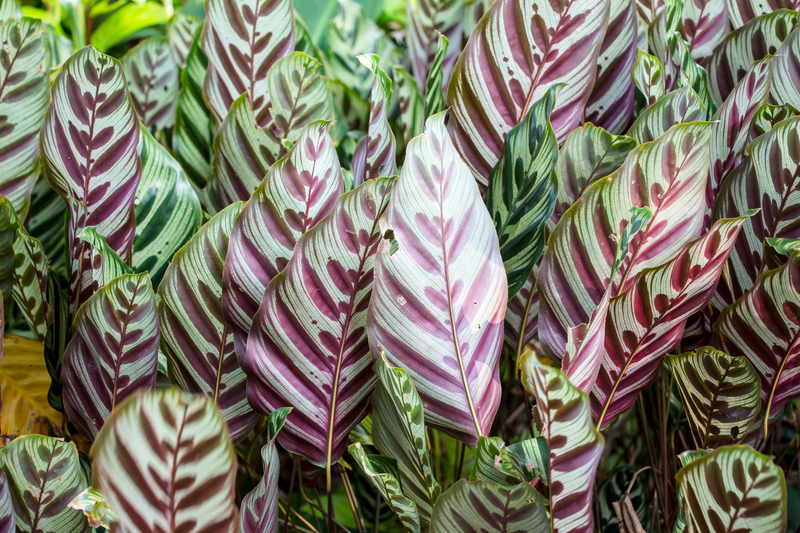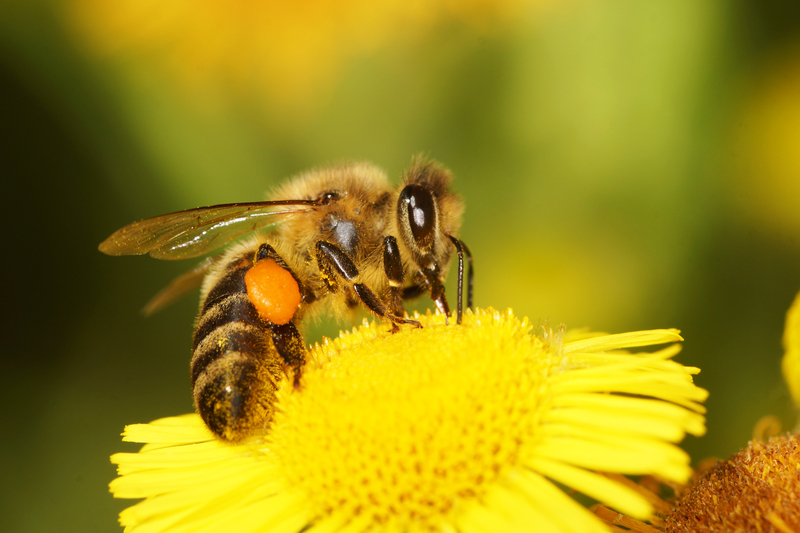Mastering Lawn Perfection: An Introductory Guide for Beginners
Achieving the perfect lawn is a journey that blends patience, technique, and proper knowledge. Whether you live in a cool, temperate climate or a warm, sunny region, mastering lawn perfection is both a science and an art. This comprehensive guide is designed specifically for beginners eager to transform their lawns into lush, vibrant green carpets. If you're seeking practical tips, essential lawn care advice, and easy-to-understand techniques, you've come to the right place.
Table of Contents
- Why Lawn Care Matters
- Understanding Your Lawn: Grass Types and Soil Health
- Essential Lawn Care Tools for Beginners
- Mowing Techniques for Perfection
- Watering Your Lawn: A Beginner's Blueprint
- Fertilization Fundamentals
- Managing Weeds and Pests Effectively
- Seasonal Lawn Care Guide
- Common Lawn Problems & Troubleshooting Tips
- Frequently Asked Questions
- Conclusion: Your Path to Lawn Mastery
Why Lawn Care Matters
A perfect lawn isn't just for curb appeal; it's also about enhancing the environment, improving property value, and creating a welcoming space for relaxation and play. Caring for your lawn helps filter pollutants, reduce soil erosion, and foster local biodiversity. For beginners, understanding the basics of lawn perfection sets the foundation for long-term success.
- Healthier Environment: Lawns absorb CO2 and release oxygen, purifying the air.
- Community Pride: Well-maintained lawns reflect positively on neighborhoods and cities.
- Safe Play Spaces: Soft, healthy grass cushions children and pets.
- Investment Value: An impeccable lawn can increase property value by up to 15% in some markets.
Understanding Your Lawn: Grass Types and Soil Health
Selecting the Right Grass Type
*Mastering lawn perfection* starts with choosing the right grass species for your climate and yard conditions. The world of grasses is divided into two main categories:
- Cool-Season Grasses: Such as Kentucky bluegrass, tall fescue, and ryegrass--ideal for northern regions with cold winters.
- Warm-Season Grasses: Like Bermuda, zoysia, and St. Augustine--suited to hot, southern climates.
Identify your local climate and sun exposure. Check with your local extension office or garden center for grass seed recommendations.
Soil Health: The Foundation of Lawn Perfection
The secret to achieving a perfect lawn often lies underground. Healthy soil provides the essential nutrients your grass needs to thrive.
- Test Your Soil: Use a soil test kit to check pH, nutrient levels, and soil structure.
- Amend as Needed: Adjust pH with lime or sulfur. Add organic matter such as compost to improve fertility and drainage.
- Aerate for Growth: Aeration relieves compacted soil and allows for deeper root growth.
Essential Lawn Care Tools for Beginners
Knowing which tools to use will streamline your quest for mastering the art of lawn maintenance. A great lawn doesn't require a garage full of equipment, but a few essential tools are vital.
- Lawn Mower: Choose between push, electric, or riding mowers depending on your lawn's size.
- String Trimmer (Weed Eater): For clean edges and tight spots.
- Garden Rake: To remove debris and break up thatch.
- Sprinkler or Hose: Ensures your yard gets uniform watering.
- Spreader: For applying seed, fertilizer, or lime evenly.
- Soil Tester Kit: For ongoing pH and nutrient checks.
Investing in quality tools ultimately saves you time and energy, making the journey to a flawless lawn much more enjoyable.
Mowing Techniques for Perfection
One of the most critical aspects in mastering lawn care is proper mowing. The right mowing methods encourage healthier, denser grass that naturally crowds out weeds.
How to Mow Like a Pro:
- Follow the One-Third Rule: Never remove more than one-third of the grass blade length at any single mowing.
- Mow When Dry: Wet grass clumps and damages mower blades.
- Keep Blades Sharp: Dull blades tear grass, leaving jagged, brown tips.
- Change Directions: Alternate your mowing pattern to prevent lawn ruts and encourage upright growth.
- Leave Clippings: Mulched clippings enrich your soil naturally with nutrients.
Watering Your Lawn: A Beginner's Blueprint
Watering may seem simple, but it's easy to overdo or underdo this crucial step. Striking a balance is key for the thriving, green lawn you desire.
Best Practices for Efficient Watering
- Water Deeply, Not Frequently: Aim for 1-1.5 inches per week, in one or two deep waterings. This encourages deep-rooted, drought-resistant grass.
- Early Morning is Ideal: Watering between 6-10 a.m. helps minimize evaporation and fungal diseases.
- Test the Soil: Insert a screwdriver--if it slides in easily, your soil is moist. If not, it's time to water.
- Adjust for Rainfall: Skip scheduled watering if nature provides enough moisture.
When mastering the art of watering, observe your lawn's color and growth. Wilting, dull, or bluish grass signals it's time to hydrate.
Fertilization Fundamentals
Fertilizing transforms average grass into vibrant, lush lawns. Understanding your lawn's unique needs ensures you don't underfeed or burn your grass.
- Choose Your Fertilizer: Organic options (compost, manure) enrich soil, while synthetic blends offer specific ratios of nitrogen (N), phosphorus (P), and potassium (K).
- Match to Your Lawn and Season: Cool-season lawns benefit from fall and early spring feeding; warm-season lawns thrive with summer applications.
- Read Product Labels: Follow instructions religiously to avoid fertilizer burn.
- Apply Evenly: Use a broadcast spreader for large lawns, hand-apply in small areas.
- Water After Fertilizing: Helps nutrients reach roots and prevents runoff.
Pro Tip: Test your soil every 2-3 years to tailor your fertilization plan for optimal lawn perfection.
Managing Weeds and Pests Effectively
Even the most dedicated beginners face challenges from stubborn weeds and invading pests. Knowing how to manage these adversaries is part of achieving lawn perfection.
Weed Control Strategies:
- Manual Removal: Spot-pull invaders before they set seed.
- Pre-Emergent Herbicides: Apply early spring to block weed seeds (like crabgrass) from germinating.
- Post-Emergent Treatments: Target visible weeds with selective sprays--always follow label instructions.
- Dense Turf: Thick, well-fed grass naturally suppresses weed establishment.
Pest Management Basics:
- Healthy Lawns Resist Pests: Proper mowing, watering, and fertilization reduce pest outbreaks.
- Identify Problems Early: Look for brown patches, thinning grass, and signs of insect activity.
- Integrated Pest Management (IPM): Combine cultural, biological, and targeted chemical controls.
- Enlist Beneficial Insects: Ladybugs and certain nematodes help control grubs and other pests.
Seasonal Lawn Care Guide
A *perfect lawn* needs year-round attention, though requirements change with each season. Here's a seasonal breakdown for mastering lawn excellence:
- Spring: Rake debris, aerate, overseed thin spots, and apply pre-emergent weed control.
- Summer: Mow higher, water consistently, and feed warm-season lawns. Monitor for drought stress and pests.
- Fall: Fertilize cool-season grass, repair bare patches, and rake leaves. Prepare for winter dormancy.
- Winter: Limit foot traffic, clear debris, and service equipment.
Adapting your care regimen according to the season is crucial--each step contributes to achieving lawn perfection throughout the year.
Common Lawn Problems & Troubleshooting Tips
Even with maximum effort, challenges may arise. Here's a guide to common lawn culprits--with solutions for beginner-level lawn mastery.
- Brown Spots: Could be from pet urine, over-fertilization, or fungal disease. Rinse spots thoroughly, adjust fertilization, and treat as needed.
- Thin or Bare Areas: Usually due to compacted soil, shade, or poor seeding. Aerate and overseed for improvement.
- Moss Growth: Indicates poor drainage or acidic soil. Adjust pH and enhance drainage.
- Weed Invasion: Increase mowing height, feed your lawn, and apply pre/post-emergent solutions.
- Grub Damage: Brown patches and loose turf signal grubs. Apply appropriate pest treatment.
Maintaining records of issues and solutions helps beginners quickly master the art of lawn perfection as they gain experience.
Frequently Asked Questions
- How often should I mow my lawn? - Mow every 5-7 days in peak growing seasons, or as needed to only remove one-third of the blade.
- What's the best grass seed for beginners? - Choose based on climate: fescue and bluegrass for cool climates, Bermuda and zoysia for warm climates.
- Is organic fertilizer better than chemical? - Both have pros and cons; organic improves soil over time, while chemical yields fast results. A balanced approach often works best.
- Why is my lawn turning yellow? - Causes include overwatering, iron deficiency, dull mower blades, or compacted soil. Diagnose and adjust accordingly.
- How do I get rid of stubborn weeds? - Employ a strategy combining dense turf, correct mowing, manual removal, and spot treatments for best results.
Conclusion: Your Path to Lawn Mastery
Mastering lawn perfection isn't an overnight feat--it requires dedication, practice, and the willingness to learn from your lawn's unique needs. Start with foundational care: choose the right grass, nurture your soil, and practice proper mowing and watering. Apply fertilizer wisely, remain vigilant against weeds and pests, and tailor your care by season for healthy, vibrant grass year-round.
As a beginner, remembering these introductory techniques will propel you towards lawn mastery. Celebrate every improvement and enjoy the process--the rewards of a lush, verdant lawn are well worth the effort!
Explore further articles for advanced tips on mastering lawn perfection--and share your experiences to help inspire fellow lawn care enthusiasts.

